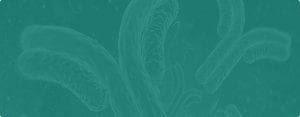How to evenly load protein on western blots

How to evenly load protein on western blots (protein quantitation for western blots)
A key point in performing a good and reliable western blot is to be sure you’ve added known amounts of sample into each lane of a gel. Whether or not adding the exact same amount of, for example, a cell lysate to all wells will make a big difference or not may depend hugely on what you’re studying. You might add the same volume of a cell lysate, but cells can grow at different rates, so on sample may have different total protein to another – a source of error. This is science, so if it makes any difference then you should take what steps you can to eliminate that difference. So, how do you load equal amounts of sample in a running gel? At a high level, there are two main ways to do this, and we’ll explain more below. Firstly, make sure you’re adding equal amounts of protein. Secondly, make sure you’re adding equal amounts of a starting material.
Equal amounts of starting material
Generally, this is less precise, but can be a reasonable solution in a few cases. For example, where you have already characterised your sample in terms of cell number using a hemocytometer, weight or some other reasonable quantity, such as presence of some tracer molecule. If one sample has twice the concentration as the other, you could add double the volume of the low-sample as the high-sample, making up the volume difference in the high sample with loading buffer. However, loading equal volumes of sample is best practice.
Equal amounts of protein
There are a wide range of options nowadays for measuring the total protein content in a sample, from the chemical to the physical. The colorimetric Bradford assay is one of the most common. There are a couple of protocols for this, and it’s available from many suppliers. In this assay you would add the Bradford reagent to your samples and a series of BGG (bovine gamma globulin) standards of known concentration. You would then interpolate the concentration of your sample from a calibration curve, based on the optical absorbance of samples. Once you have your sample protein concentrations you can dilute, or concentrate (e.g by dialysis), them as needed to get them all to the same concentration. A quick but somewhat less specific method could also be performed using a spectrophotometer measuring absorbance at 280 nm (A280). This method doesn’t require a calibration curve, but is best for when you have a single protein, rather than a complex mixture as in a lysate. Download PDF :  Filed Under : Antibodies
Filed Under : Antibodies


